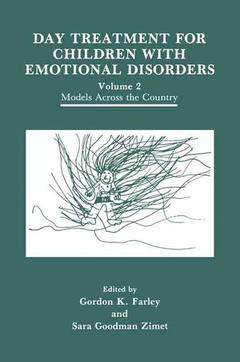The life span of day treatment for children in the United States is relatively short, covering a period of about 50 years. Although the first 20 years saw little growth in the number of centers operating around the country, the concept of day treatment was recognized by the Joint Commission on Mental Illness and Health in 1961 as the most significant treatment innovation of this century. Enthusiasm for this treatment modality gained impetus from growing dissatisfaction among many mental health care providers who had no choice but to place children in a highly restrictive hospital environment. Day treat ment did not carry the stigma associated with inpatient placement. The children could now remain with their own families and within their own communities. The parents could be actively included in their child's treatment. This new modality avoided the short- and long-term negative effects of institutionalization, and there was a fa vorable cost discrepancy between day and inpatient mental health services. In more recent years, there has been growing evidence of the efficacy of day treatment as an intensive therapeutic environment for children and their parents. Despite these advantages, day treatment has continued to be underutilized in favor of inpatient treatment by both the psychiatric community and third-party payers. Only recently is it being acknowledged by some insurers as a therapeutically sound and financially advantageous alternative to inpatient services. Conse quently, it is showing signs of intense growth nationally.




